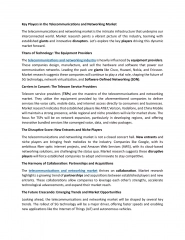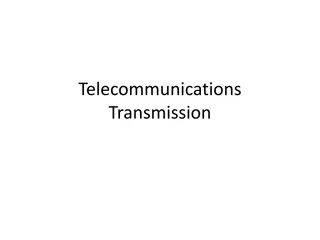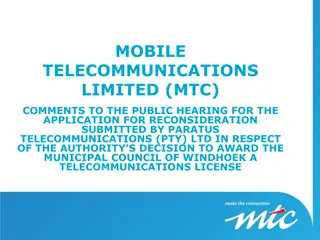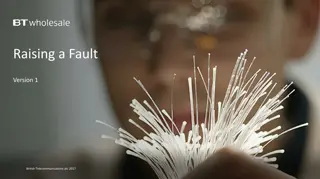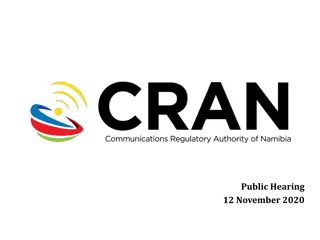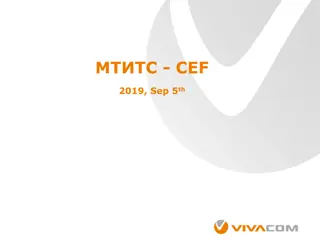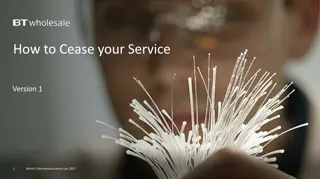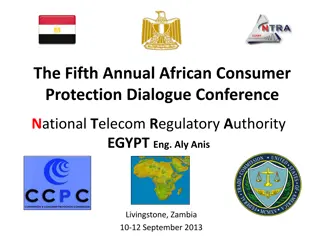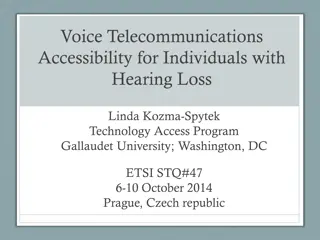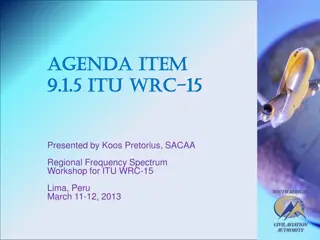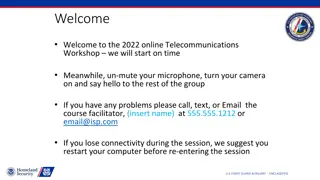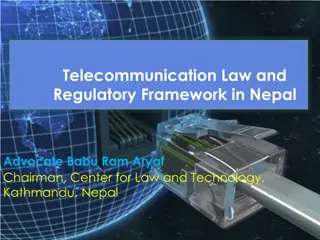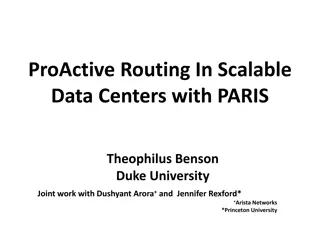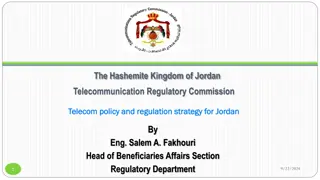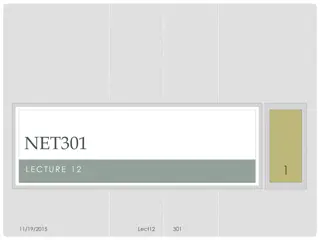Understanding the Evolution of Telecommunications Networks
Communication over distance has always been crucial for civilization, with electronic means playing an increasingly vital role. Telecom services are essential for businesses, social interactions, and entertainment, with public operators like Ethio Telecom providing services through telecom networks. The development of telecom has a rich history dating back to the invention of the telegraph in 1837, leading to innovations such as telephony, radio phones, cell phones, and digital services. The national telecommunication network comprises local, junction, and trunk networks, interconnected to provide efficient communication both nationally and internationally.
Download Presentation

Please find below an Image/Link to download the presentation.
The content on the website is provided AS IS for your information and personal use only. It may not be sold, licensed, or shared on other websites without obtaining consent from the author. Download presentation by click this link. If you encounter any issues during the download, it is possible that the publisher has removed the file from their server.
E N D
Presentation Transcript
Why Telecom Study Communication over a distance is essential to civilization and this communication is increasingly provided by electronic means. In Order to transport large amount information quickly, telcom services are extensively used in business, in social life & for entertainment. 2
Who provides telecom service & Who are the participants? Telecom service are provided by public Telecom operators (Eg: Ethio telecom) through telecom Networks. Telecom networks provides traffic by means of transmission links connected by switching system. Participants: Business of telecom involves many participants. Public telecom operator(PTO) Providers of service that involve also the equipment & component manufacturer (for both h/w & s/w) Financial Investors (Government or private) Users, also called as subscribers or customers 3
Development of Telecom Most of our activities depends on using information like human speech, written & printed document & computer data. Similarly information can be processed, stored & transmitted by means of technology. For transporting these information over a long distance, Telecommunication is used by converting these information into electrical signals. Electrical communications started with the invention of telegraph by weatstone & Morse in 1837 4
Contd 1837- Invention of telegraph 1870- telephony, telex,facsimile (1876- 1878)Alexander Grahambel invented 1st telephone exchange 1970- Radio phone 1990- Home banking, cardless calling, cell phone, messaging 2000- pocket phone,voice recognition, digital end to end services,satellite business services etc. ------------------------------------------------- Network Structure :***Refer to handout attached*** 5
A national public switched telecommunications network (PSTN) is in the Fig. 1. Local networks which connect customers stations to their local exchanges. (These are also called subcribers distribution networks, customer access Networks or the customer loop) 2. Junction networks which interconnect a group of local exchanges serving an area and a tandem or trunk exchange 3. The trunk network or toll network which provides long distance circuits between local areas through out the country The totality of 2 & 3 is some times called the core network . The inner core consisting of trunk network and the outer core consisting of Junction network. Above the hierarchy, there is international network, which provides circuits linking the national networks of different countries. The national network is connected to the international network by one or more international gateway exchange 7
Private branch exchange(PBX) Below the hierarchy of the National public network, some customers have internals lines serving extension telephones. These are connected to one another and to lines from the public exchange by a private branch exchange(PBX). For data communications, they may have a LAN which is also connected to a public data network. Large companies also have private networks (Usually employing circuits leased from the public telecommunications operator) which link their PBXs in different parts of the country or even across several countries. 8
Nodes Nodes are the transmission links joining different locations in a telecommunication networks. Thus customer s terminal is a node switching centers form other nodes. Customer require connections to nodes where there are telephone operators to assist them in making calls and to public emergency services (eg: police, fire and ambulance services). They also wish to obtain service connections to commercial providers of Value added network services (VANS), such as voice mail boxes, stock market prices and sports results etc.. 9
Contd Hence the telecom network can be considered to be the totality of the transmission links and the nodes, which are of the following types. Customer nodes Switching nodes Transmission nodes Service nodes 10
Signalling In order to setup a connection to the required destination and to clear it when the conversation is over, The connection that passes through several exchanges and such information must be sent between all exchanges on a route. This interchange of information is called signalling . 11
Interacting Subsystems of telecom A telecom network may consists of system with the following interacting systems Transmission systems Switching systems Signalling systems 12
Contd These services may use separate switching centers Private circuits use transmission links semi- permanently connected together at the network nodes without switching. However all these different services use a common transmission bearer network consisting of the junction and trunk circuits. Customers are connected to this at their local exchanges via local access network. Thus the services are divided into 2 types Teleservices Bearer services 14
Contd Teleservices , in which provision of service depends on particular terminal apparatus. Eg: telephone , teleprinter Bearer services: which present the customer with transmission capacity that can be used for any desired function Eg: private circuits 15
Terminology Different names for the various networks and their switching centers in different languages and also in different English speaking countries. The table in the next slide shows the comparison of nomenclature between north American and British 16
Contd. 17
Contd But Internationally, trunk exchange are called primary centers, secondary centers and tertiary centers. Having primary centers at the lowest level at the trunk hierarchy and it interfaces with the local exchanges. In ITU(International telecommunication Union) terminology, an international gateway exchange is called a centre de transit 3(CT3). International exchanges CT2 and CT1 connect only international circuits. Exchanges CT2 switch traffic between regional group countries and CT1 exchanges switch traffic between continents. 18
standards ITU: the standardisation which has made an international network possible is carried out through the International telecommunications Union founded in 1865. It was founded as International telegraph Union and is an oldest of the specialized agencies of the United nations. The work of ITU is carried out through two main bodies ITU-T ITU-R 19
Contd ITU-T (ITU- telecommunications) Which was formerly the comite consultatif international telegraphique et telephonique(CCITT). Its duties include the study of technical questions, operating methods and tariffs for telephony, telegraphy and data communications 20
Contd ITU-R(ITU Radio communications) sector.. Which was formerly the comite consultatif international des radio communications(CCIR). It studies all technical and operating questions relating to radio communications including Point to point communications Mobile services And broadcasting 21
Contd IFRB (International frequency registration board) Is associated with ITU-R, which regulates the assignment of radio frequencies to prevent interference between different transmissions. 22


